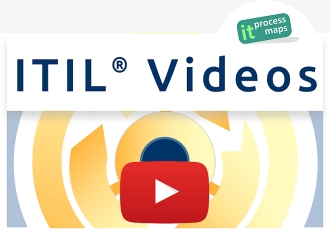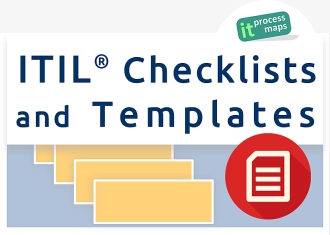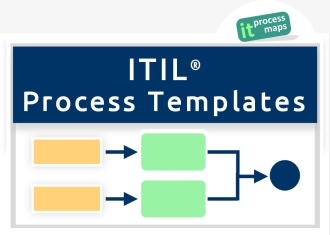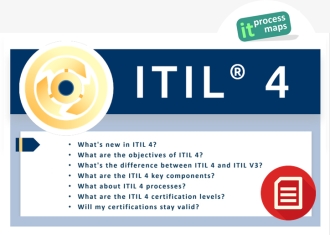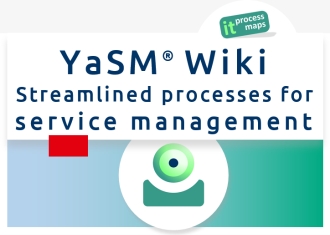Supplier Management: Difference between revisions
No edit summary |
|||
| Line 11: | Line 11: | ||
<br style="clear:both;"/> | <br style="clear:both;"/> | ||
<p> </p> | <p> </p> | ||
'''<span id="Overview">Objective:</span>''' | '''<span id="Overview">Objective:</span>''' <html><span id="md-webpage-description" itemprop="description">The objective of <i>ITIL Supplier Management</i> is to ensure that all contracts with suppliers support the needs of the business, and that all suppliers meet their contractual commitments.</span></p> | ||
<p><b>Part of</b>: <a | <p><b>Part of</b>: <a href="https://wiki.en.it-processmaps.com/index.php/ITIL_Service_Design" title="ITIL Service Design">Service Design</a></html> | ||
'''Process Owner''': [[Supplier Management#Supplier Manager|Supplier Manager]] | '''Process Owner''': [[Supplier Management#Supplier Manager|Supplier Manager]] | ||
| Line 24: | Line 23: | ||
In ITIL V3, Supplier Management is part of the [[ITIL Service Design|Service Design]] process to allow for a better integration into the Service Lifecycle - Supplier Management was covered within "ICT Infrastructure Management" in the previous ITIL version. | In ITIL V3, Supplier Management is part of the [[ITIL Service Design|Service Design]] process to allow for a better integration into the Service Lifecycle - Supplier Management was covered within "ICT Infrastructure Management" in the previous ITIL version. | ||
[[Image:Itil-supplier-management.jpg|right|thumb|375px|alt=Supplier Management ITIL|[https://wiki.en.it-processmaps.com/images/pdf/process_overview_supplier_management_itilv3.pdf ITIL Supplier Management]]] | [[Image:Itil-supplier-management.jpg|right|thumb|375px|alt=Supplier Management ITIL|link=https://wiki.en.it-processmaps.com/index.php/File:Itil-supplier-management.jpg|[https://wiki.en.it-processmaps.com/images/pdf/process_overview_supplier_management_itilv3.pdf ITIL Supplier Management]]] | ||
Following the introduction of Design Coordination in '''''ITIL 2011''''' the information flows have been adapted slightly. The process overview of [[Media:Itil-supplier-management.jpg|ITIL Supplier Management (.JPG)]] is showing the most important interfaces (see Figure 1). | Following the introduction of Design Coordination in '''''ITIL 2011''''' the information flows have been adapted slightly. The process overview of [[Media:Itil-supplier-management.jpg|ITIL Supplier Management (.JPG)]] is showing the most important interfaces (see Figure 1). | ||
| Line 130: | Line 129: | ||
<html> | <html> | ||
<ul> | <ul> | ||
<li><a | <li><a href="https://wiki.en.it-processmaps.com/index.php/ITIL_KPIs_Service_Design#ITIL_KPIs_Supplier_Management" title="ITIL KPIs Supplier Management">Key Performance Indicators (KPIs) Supplier Management</a></li> | ||
<li><a | <li><a href="https://wiki.en.it-processmaps.com/index.php/Checklist_Underpinning_Contract_(UC)" title="Underpinning Contract template">Underpinning Contract (UC template)</a></li> | ||
</ul><p></html> | </ul><p></html> | ||
<p> </p> | <p> </p> | ||
| Line 149: | Line 148: | ||
!style="background:#ffffee; width: 50%; text-align:center"| ITIL Role | Sub-Process | !style="background:#ffffee; width: 50%; text-align:center"| ITIL Role | Sub-Process | ||
! style="background:#ffffee;" | [[Supplier Management#Supplier Manager|Supplier Manager]] | ! style="background:#ffffee;" | [[Supplier Management#Supplier Manager|Supplier Manager]] | ||
! style="background:#ffffee;" | Applications Analyst[[Supplier | ! style="background:#ffffee;" | Applications Analyst[[Supplier Management#Team|<small>[3]</small>]] | ||
! style="background:#ffffee;" | Technical Analyst[[Supplier | ! style="background:#ffffee;" | Technical Analyst[[Supplier Management#Team|<small>[3]</small>]] | ||
|- | |- | ||
|style="text-align:left;" |[[#ITIL Supplier Management Framework|Providing the Supplier Management Framework]] | |style="text-align:left;" |[[#ITIL Supplier Management Framework|Providing the Supplier Management Framework]] | ||
| Line 195: | Line 194: | ||
<p> </p> | <p> </p> | ||
== | ==Notes== | ||
<html>By:  Stefan Kempter <a rel="author" href="https://plus.google.com/111925560448291102517/about"><img style="margin:0px 0px 0px 0px;" src="/skins/Vector/images/itpm/bookmarking/gplus.png" width="16" height="16" title="By: Stefan Kempter | Profile on Google+" alt="Author: Stefan Kempter, IT Process Maps GbR" /></a>, IT Process Maps.</p> | |||
< | <p> </p> | ||
</ | |||
<p><small> | <p><small> | ||
| Line 232: | Line 215: | ||
</span> | </span> | ||
</small></p> | </small></p> | ||
</ | |||
<!-- define schema.org/WebPage --> <span itemscope itemtype="https://schema.org/WebPage" itemref="md-webpage-description"> | |||
<meta itemprop="alternativeHeadline" content="ITIL Supplier Management" /> | |||
<meta itemprop="name" content="Supplier Management" /> | |||
<meta itemprop="significantLinks" content="https://wiki.en.it-processmaps.com/index.php/ITIL_KPIs_Service_Design#ITIL_KPIs_Supplier_Management" /> | |||
<meta itemprop="significantLinks" content="https://wiki.en.it-processmaps.com/index.php/Checklist_Underpinning_Contract_(UC)" /> | |||
<link itemprop="url" href="https://wiki.en.it-processmaps.com/index.php/Supplier_Management" /> | |||
<meta itemprop="inLanguage" content="en" /> | |||
<link itemprop="citation" href="https://wiki.de.it-processmaps.com/index.php/Supplier_Management" /> | |||
<link itemprop="citation" href="https://wiki.es.it-processmaps.com/index.php/ITIL_Gestion_de_Suministradores" /> | |||
<meta itemprop="Headline" content="Supplier Management" /> | |||
<link itemprop="isPartOf" href="https://wiki.en.it-processmaps.com/index.php/ITIL_Service_Design" /> | |||
<link itemprop="primaryImageOfPage" href="https://wiki.en.it-processmaps.com/images/a/ae/Itil-supplier-management.jpg" /> | |||
<link itemprop="author" href="https://plus.google.com/111925560448291102517/about" /> | |||
<meta itemprop="author" content="Stefan Kempter" /> | |||
<meta itemprop="creator copyrightHolder publisher" content="IT Process Maps" /> | |||
</span><p></html> | |||
<!-- This page is assigned to the following categories: --> | <!-- This page is assigned to the following categories: --> | ||
[[Category:ITIL V3]][[Category:ITIL 2011]][[Category:ITIL process]][[Category:Service Design|Supplier Management]][[Category:Supplier Management|!]] | [[Category:ITIL V3]][[Category:ITIL 2011]][[Category:ITIL process]][[Category:Service Design|Supplier Management]][[Category:Supplier Management|!]] | ||
<!-- --- --> | <!-- --- --> | ||
Revision as of 14:44, 15 May 2016

Objective: The objective of ITIL Supplier Management is to ensure that all contracts with suppliers support the needs of the business, and that all suppliers meet their contractual commitments.
Part of: Service Design
Process Owner: Supplier Manager
Process Description
In ITIL V3, Supplier Management is part of the Service Design process to allow for a better integration into the Service Lifecycle - Supplier Management was covered within "ICT Infrastructure Management" in the previous ITIL version.
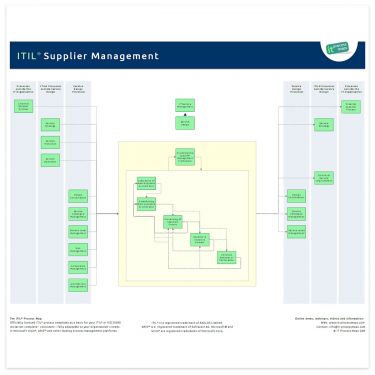
Following the introduction of Design Coordination in ITIL 2011 the information flows have been adapted slightly. The process overview of ITIL Supplier Management (.JPG) is showing the most important interfaces (see Figure 1).
All suppliers and contracts are managed through the Supplier and Contract Management Information System (SCMIS), which in ITIL V3 was known as the Supplier & Contract Database (SCD).
Sub-Processes
These are the ITIL Supplier Management sub-processes and their process objectives:
Providing the Supplier Management Framework
- Process Objective: To provide guidance and standards for the procurement of services and products. This includes the provision of the Supplier Strategy and the preparation of standard Terms and Conditions.
Evaluation of new Suppliers and Contracts
- Process Objective: To evaluate prospective suppliers in accordance with the Supplier Strategy, and to select the most suitable supplier.
Establishing new Suppliers and Contracts
- Process Objective: To negotiate and sign a binding contract with a supplier. This process is mainly applied for significant investments, either in externally provided services or in technology.
Processing of Standard Orders
- Process Objective: To process orders for commodity products and services, and to order pre-defined items within the boundaries of existing contract frameworks.
Supplier and Contract Review
- Process Objective: To verify if the contractually agreed performance is actually delivered, and to define improvement measures if required (see "Supplier and Contract Review")
Contract Renewal or Termination
- Process Objective: To carry out regular renewals of contracts, to assess if those contracts are still relevant, and to terminate contracts which are no longer needed.
Definitions
The following ITIL terms and acronyms (information objects) are used in ITIL Supplier Management to represent process outputs and inputs:
Purchase Order
- An order for purchasing items from a supplier. If the order is for an externally supplied Supporting Service it is accompanied by an Underpinning Contract defining service level targets.
Purchase Request
- A request to purchase a service or a product from an external supplier, issued for example from Release Management during Service Build. Processing of a Purchase Request will generally proceed only if the requester also holds an approved budget for the purchase.
Standard Terms and Conditions
- A set of terms and conditions which are routinely attached to contracts and orders when procuring services or products.
Supplier and Contract Management Information System (SCMIS)
- The Supplier and Contract Management Information System is database or structured document used to manage suppliers and contracts throughout their lifecycle. The SCMIS contains key attributes of all contracts with suppliers, and should be part of the Service Knowledge Management System.
- Remark: In ITIL V3 (2007) the Supplier and Contract Management Information System was referred to as the Supplier & Contract Database (SCD).
Supplier and Contract Review Meeting Minutes
- The Supplier and Contract Review Meeting Minutes document achieved vs. agreed supplier performance. They also contain any identified supplier weaknesses and problems, as well as suggestions on how the situation could be improved.
Supplier Evaluation
- The resulting document from the Supplier Evaluation process, describing in detail the criteria used for evaluating and selecting a suitable supplier.
Supplier Service Level Report
- The Supplier Service Level Report gives insight into a service provider's external supplier's ability to deliver the agreed service quality. To this purpose, it compares the agreed and actually achieved service levels, and also includes information on the usage of services, ongoing measures for service improvement, and any exceptional events.
Supplier Strategy
- The Supplier Strategy sets guidelines for the procurement of services and goods. It typically includes criteria for the selection of suitable suppliers and a list of preferred suppliers.
Underpinning Contract (UC)
- A contract between an IT service provider and a third party. The third party provides supporting services that enable the service provider to deliver a service to a customer. Therefore, Underpinning Contracts must be aligned with the customer-facing Service Level Agreements (see also: ITIL Checklist Underpinning Contract - UC).
Templates | KPIs
Roles | Responsibilities
Supplier Manager - Process Owner
- The Supplier Manager is responsible for ensuring that value for money is obtained from all suppliers.
- He makes sure that contracts with suppliers support the needs of the business, and that all suppliers meet their contractual commitments.
| Responsibility Matrix: ITIL Supplier Management | |||
| ITIL Role | Sub-Process | Supplier Manager | Applications Analyst[3] | Technical Analyst[3] |
|---|---|---|---|
| Providing the Supplier Management Framework | A[1]R[2] | - | - |
| Evaluation of New Suppliers and Contracts | AR | R | R |
| Establishing New Suppliers and Contracts | AR | - | - |
| Processing of Standard Orders | AR | - | - |
| Supplier and Contract Review | AR | - | - |
| Contract Renewal or Termination | AR | - | - |
Remarks
[1] A: Accountable according to the RACI Model: Those who are ultimately accountable for the correct and thorough completion of the ITIL Supplier Management process.
[2] R: Responsible according to the RACI Model: Those who do the work to achieve a task within Supplier Management.
[3] see → Role descriptions
Notes
By: Stefan Kempter ![]() , IT Process Maps.
, IT Process Maps.
Process Description › Sub-Processes › Definitions › Roles
